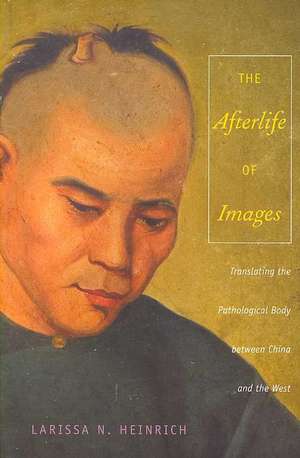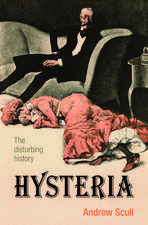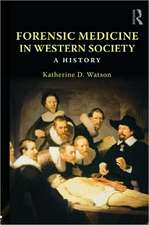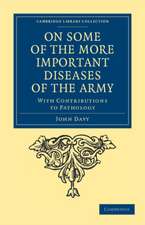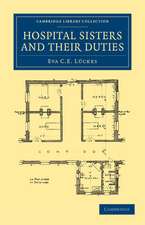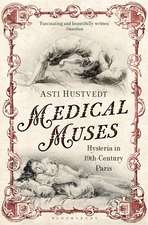The Afterlife of Images – Translating the Pathological Body between China and the West: Body, Commodity, Text
Autor Ari Larissa Heinrichen Limba Engleză Paperback – 19 feb 2008
Preț: 239.54 lei
Nou
Puncte Express: 359
Preț estimativ în valută:
45.85€ • 49.82$ • 38.54£
45.85€ • 49.82$ • 38.54£
Carte tipărită la comandă
Livrare economică 21 aprilie-05 mai
Preluare comenzi: 021 569.72.76
Specificații
ISBN-13: 9780822341130
ISBN-10: 0822341131
Pagini: 248
Ilustrații: 42 illustrations
Dimensiuni: 156 x 234 x 20 mm
Greutate: 0.37 kg
Editura: MD – Duke University Press
Seria Body, Commodity, Text
ISBN-10: 0822341131
Pagini: 248
Ilustrații: 42 illustrations
Dimensiuni: 156 x 234 x 20 mm
Greutate: 0.37 kg
Editura: MD – Duke University Press
Seria Body, Commodity, Text
Cuprins
Introduction; 1. How China Became the Cradle of Smallpox: Transformations in Discourse; 2. The Pathological Body: Lam Quas Medical Portraiture; 3. The Pathological Empire: Early Medical Photography in China; 4. Whats Hard for the Eye to See: Anatomical Aesthetics from Benjamin Hobson to Lu Xun; Epilogue: Through the Microscope
Recenzii
The Afterlife of Images is a fascinating and important study of the ways that Western medicine participated in the formation of ideas of race, the discrete body, the autonomous self, the nation, and a modernist literary imagination in China. Well written, carefully researched, and loaded with subtle and persuasive interpretations, it is the kind of historical study needed to demonstrate the aesthetic and ontological constructionsthe naturalizing powers of medical representationthat have given us our complex modern nature. Judith Farquhar, author of Appetites: Food and Sex in Post-Socialist China
Larissa N. Heinrich deftly weaves a range of materialsincluding prints, painting, photography, and literatureinto a fascinating narrative of the ways visual and linguistic tropes formed and reinforced certain eighteenth and nineteenth-century Western understandings of China. Furthermore, she is attentive to the dialectics of the relationship, especially the way that Western knowledge and ways of seeing shaped certain Chinese concepts about China and its problems, especially in the latter half of the nineteenth century and the early twentieth.Stanley K. Abe, author of Ordinary Images
[T]he co-production of images remains a central theme inThe Afterlife of Images in a way which generally avoids the Chinese people as victim understanding of a reductivist critique of Orientalism...This perceptive insight is typical of a work, produced by a scholar whose initial training was in Chinese literature, which is exemplary in its serious engagement with a very wide range of images to open up discussion about the body in Chinese visual culture in ways which are likely to be much cited and to prove very significant points of reference in the future. Craig Clunas, Art History, Summer 2009
Larissa N. Heinrich deftly weaves a range of materialsincluding prints, painting, photography, and literatureinto a fascinating narrative of the ways visual and linguistic tropes formed and reinforced certain eighteenth and nineteenth-century Western understandings of China. Furthermore, she is attentive to the dialectics of the relationship, especially the way that Western knowledge and ways of seeing shaped certain Chinese concepts about China and its problems, especially in the latter half of the nineteenth century and the early twentieth.Stanley K. Abe, author of Ordinary Images
[T]he co-production of images remains a central theme inThe Afterlife of Images in a way which generally avoids the Chinese people as victim understanding of a reductivist critique of Orientalism...This perceptive insight is typical of a work, produced by a scholar whose initial training was in Chinese literature, which is exemplary in its serious engagement with a very wide range of images to open up discussion about the body in Chinese visual culture in ways which are likely to be much cited and to prove very significant points of reference in the future. Craig Clunas, Art History, Summer 2009
Notă biografică
Textul de pe ultima copertă
"Larissa N. Heinrich deftly weaves a range of materials--including prints, painting, photography, and literature--into a fascinating narrative of the ways visual and linguistic tropes formed and reinforced certain eighteenth- and nineteenth-century Western understandings of China. Furthermore, she is attentive to the dialectics of the relationship, especially the way that Western knowledge and ways of seeing shaped certain Chinese concepts about China and its problems, especially in the latter half of the nineteenth century and the early twentieth."--Stanley K. Abe, author of "Ordinary Images"
Descriere
How western society came to see China as an inherently unhealthy place, and how that notion came to be incorporated into Chinese national identity
